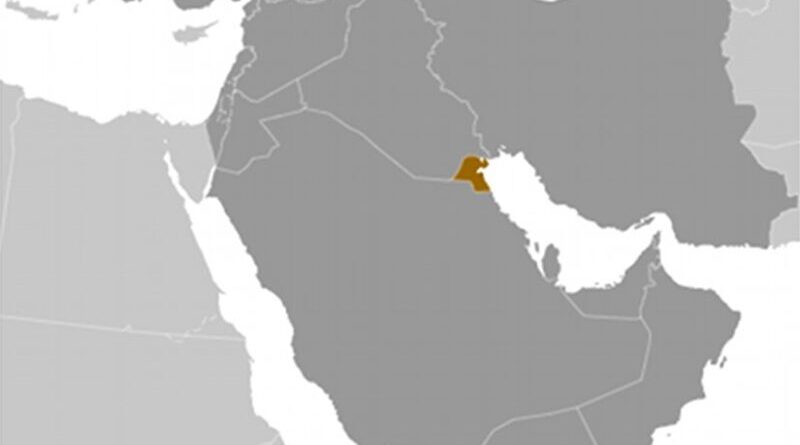Possible Record Temperature Of 129 Fahrenheit Recorded In Kuwait
The World Meteorological Organization (WMO) said it is setting up a committee to examine whether Mitrabah, Kuwait, set a new highest temperature record for the Eastern hemisphere and Asia, with a reported temperature of 54.0°C (129.2°F) on 21 July 2016.
Large parts of the Middle East and North Africa were gripped by heatwaves last week, withemperatures exceeding by a large margin the seasonal averages, and over a sustained period. This affected, in particular, the northern part of countries in the Arabian Gulf and North Africa.
Mitrabah reportedly saw a temperature of 54.0°C on 21 July and the city of Basra in Iraq recorded a temperature of 53.9°C (128°C) on Friday 22 July. Southern Morocco also saw temperatures of between 43°C and 47°C.
Governments issued heat-health warnings and took measure to minimise impacts on population. However the refugee population in the Middle East were the most affected, with heat exacerbating their fragile situation and suffering.
WMO is responsible for the official archives of World Weather and Climate Extremes (temperature, rainfall, wind gust, heaviest hailstone etc).
According to this archive, the hottest temperature ever recorded was in Furnace Creek, Death Valley, California at 56.7°C on 10 July 1913. The highest temperature for the Eastern hemisphere was reportedly set in July 1931 in Kebili, Tunisia, at 55.0°C. However, weather historians have questioned the accuracy of colonial temperature records from many weather stations versus the modern records at these same sites.
The Kuwait investigation, as with all WMO official investigations, will consist of meteorologists and climatologists. They will examine the instrumentation used, the quality of observations, the microclimate of the location, the epresentativeness of the station to its surroundings and to its own record. The station is in a remote, sparsely populated area in the north-west of Kuwait.
Heatwaves
There have been a number of heatwaves in recent weeks.
A widespread heatwave has affected the central and eastern United States of America, with temperatures of 95-100 °Fahrenheit (35-38°C), and heat index values to reach 110°F F (43°C), with some areas reaching 115 °F (46°C), according to the US National Weather Service.
At the peak on Friday, July 22, almost 124 million people were under an Excessive Heat Warning, Excessive Heat Watch or Heat Advisory. Above average temperatures are forecast to continue along much of the eastern U.S. through mid-week.
A unique feature of these heatwaves is its very high overnight low temperatures, which offer little relief from the oppressive heat.
Climate Change Attribution
Over the past 50 years, hot days, hot nights and heatwaves have become more frequent. The length, frequency and intensity of heatwaves will likely increase further during this century, according to the Intergovernmental Panel on Climate Change.
The science of attribution is making it possible to analyse individual events and assess the role of climate change played, rather than natural variability.
Scientific assessments have found that many extreme events in the 2011-15 period, especially those relating to extreme high temperatures, have had their probabilities substantially increased as a result of anthropogenic climate change – by a factor of 10 or more in some cases.
In view of the health risks posed by heatwaves, WMO said it is working in close consultation with the World Health Organization to improve climate services like heat health warning systems and guidance, as well as more tailored forecasts for the energy sector which comes under strain during heatwaves.
Hottest Jan-June on record
The latest heatwaves come as Earth has just witnessed the hottest six month period on record, with temperatures shattering even the record levels seen in 2015. A number of countries have seen new national temperature records – for instance India saw a new national temperature record of 51°C in Rajasthan in May.
The global land and ocean average temperature for January–June at 1.05°C (1.89°F) above the 20th century average, besting the previous record set in 2015 by 0.20°C (0.36°F), according to the U.S. National Oceanic and Atmospheric Administration.
From January to June, January–June 2016 was characterized by warmer to much-warmer-than-average conditions engulfing most of the world’s land and ocean surfaces. Record warmth was widespread across Alaska, western Canada, southern Mexico, northern South America, central Africa, Indonesia, northern and eastern Australia, North Indian Ocean, and across parts of north-central Russia, western Asia, central and eastern tropical Pacific Ocean, the southwestern Pacific Ocean, and the northwestern Atlantic Ocean.

